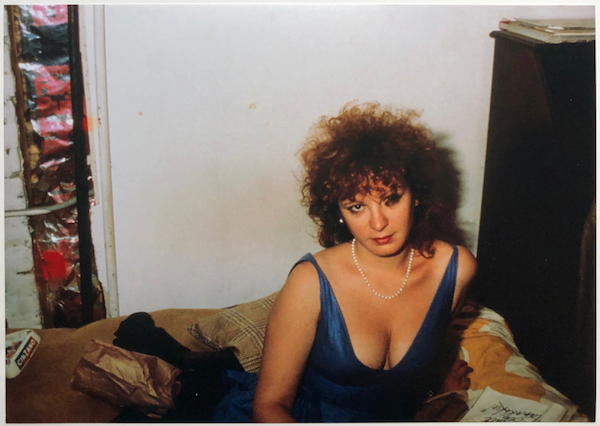Movie review by Greg Carlson
“Citizenfour” Oscar-winner Laura Poitras profiles photographer and activist Nan Goldin in “All the Beauty and the Bloodshed.” Like its talented subject, the movie cannot be confined to a single category or story arc. Along with a penetrating, candid examination of Goldin’s career trajectory, the film spends considerable time on the artist’s efforts to hold Purdue Pharma and members of the Sackler family accountable for the overprescribing of opioids including OxyContin. Poitras artfully covers lots of territory in the documentary, which received the Golden Lion, the Venice International Film Festival’s highest honor, in September of 2022.
Goldin may not be a household name outside the art world, but her searing and confessional pictures are among the most influential to emerge from New York City’s post-Stonewall cultural explosion. Documenting friends, acquaintances, and her own intimate relationships, Goldin profiled members of the gay and transgender community with the eye of an insider. Her interests also led to photos of the Bowery-based drug scene and images of the vibrant post-punk and new and no wave music worlds. The film’s center section examines in detail “The Ballad of Sexual Dependency,” Goldin’s protean slideshow.
Goldin crosses paths with many other aspiring creative artists during her most fecund years, and Poitras carefully organizes the guest book by allowing some notable faces to flutter and flicker by and others to take up more space and greater prominence. The deeper Poitras dives, the greater the realization that so many of Goldin’s peers lost their lives to AIDS or drug overdoses. Goldin once wrote of her late friend and collaborator Cookie Mueller: “She was the starlet of the Lower East Side: a poetess, a short-story writer, she starred in John Waters’s early movies. She was sort of the queen of the whole downtown social scene.”
Mueller may personify and characterize the moment in time that Goldin so memorably captured, but Poitras devotes just as much or more attention to David Wojnarowicz, who was recently memorialized in Chris McKim’s vital, feature-length portrait. Goldin’s curatorial role in the “Witnesses: Against Our Vanishing” exhibition in 1989 is highlighted by the director for more than one thematically resonant meaning – you marvel at the way Poitras connects the dots between ACT UP (AIDS Coalition to Unleash Power) and PAIN (Prescription Addiction Intervention Now) to illuminate the intersection of politics and art that will factor in different stages of Goldin’s life.
Seen planning and carrying out the civil disobedience designed to force prominent museums to remove the Sackler name from buildings, wings, galleries, and collections, Goldin leverages her own prominence to bring about change. Like many autobiographically-inclined artists, Goldin preserved and archived her own family history. The tragedy of older sister Barbara, who took her own life in 1965 when Nan was eleven, haunts “All the Beauty and the Bloodshed” as profoundly and poignantly as any of the photographs Nan would go on to make. Goldin’s openness and forthrightness extends to her advocacy on behalf of so many others who, like herself, struggled or continue to struggle with opioid addiction.
